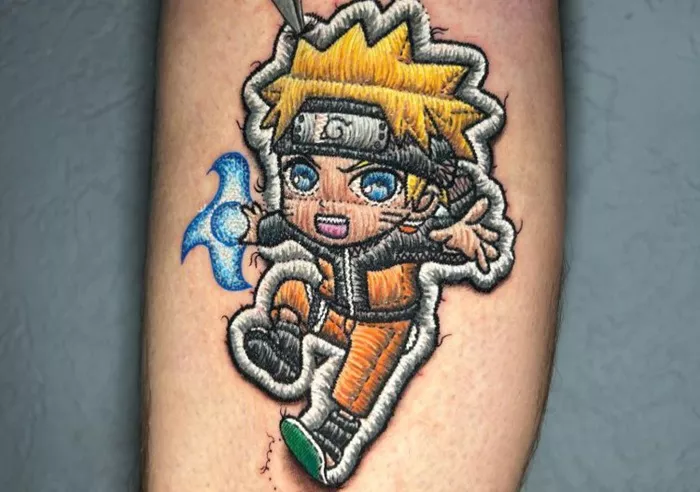Getting your first tattoo is an exciting milestone. Tattoos are more than just art on your body; they are personal expressions of who you are, your beliefs, or significant moments in your life. Deciding on your first tattoo involves many choices, from the design to the placement. Choosing the right spot for your first tattoo is as important as the tattoo itself. This decision can influence the experience, healing process, and how the tattoo looks over time. Let’s explore the best places to get your first tattoo and why these locations are ideal.
Forearm
The forearm is one of the most popular places for first-time tattoos. It is highly visible, making it a great spot to showcase your art. The skin here is relatively smooth and less sensitive than other areas, which can reduce pain during the tattooing process.
Why Choose the Forearm?
Pain Level: Moderate to low. The forearm has a good cushion of muscle and less nerve concentration.
Visibility: Easy to show or cover up, depending on your preference.
Design Options: The forearm provides ample space for intricate designs, scripts, or minimalistic tattoos.
Healing: It’s easy to care for during the healing process.
Upper Arm
The upper arm is another excellent choice for your first tattoo. This area is versatile, allowing for both small and large designs. Tattoos on the upper arm are easy to hide, making it a great spot if you’re concerned about professional or social settings.
Why Choose the Upper Arm?
Pain Level: Low. The upper arm is fleshy, reducing discomfort.
Visibility: Can be hidden with short sleeves or revealed in sleeveless attire.
Design Options: Great for both bold and intricate designs.
Durability: Tattoos in this area age well due to minimal sun exposure.
Thigh
The thigh is a less conventional yet increasingly popular location for tattoos. It offers a large canvas for detailed artwork and provides the privacy some people prefer.
Why Choose the Thigh?
Pain Level: Low to moderate. The fleshier part of the thigh cushions the needle.
Visibility: Easy to cover with clothing or display in shorts.
Design Options: Perfect for large, detailed pieces like landscapes or portraits.
Healing: Minimal movement in this area speeds up healing.
Shoulder
The shoulder is a classic choice for tattoos. It provides a rounded surface, ideal for designs that wrap around the area.
Why Choose the Shoulder?
Pain Level: Low to moderate. The shoulder has fewer nerve endings.
Visibility: Can be easily covered or shown off.
Design Options: Suitable for medium to large designs like mandalas or florals.
Durability: Tattoos here are less prone to fading due to sun exposure.
Calf
The calf is a fantastic spot for those who want a tattoo on their legs without much pain. It’s ideal for designs that stand out when you wear shorts or skirts.
Why Choose the Calf?
Pain Level: Low. The calf muscle provides a soft area for tattooing.
Visibility: Visible when desired, yet easy to cover.
Design Options: Perfect for bold designs like animals, tribal art, or geometric patterns.
Healing: Limited friction ensures smoother healing.
Wrist
The wrist is a favorite for small and delicate tattoos. It’s a visible area, often chosen for meaningful designs.
Why Choose the Wrist?
Pain Level: Moderate. The skin is thinner, but the area is small, making the process quicker.
Visibility: Always visible, ideal for inspirational quotes or symbols.
Design Options: Best for small designs like initials, stars, or minimalistic art.
Healing: Easy to care for, but avoid excessive wrist movement initially.
Back
The back is a versatile and expansive canvas for tattoos. It is perfect for large, detailed designs.
Why Choose the Back?
Pain Level: Low to moderate, depending on the specific area. The upper back is less painful than the spine.
Visibility: Easy to cover, making it ideal for private designs.
Design Options: Perfect for elaborate designs like wings, dragons, or full landscapes.
Healing: The back is easy to care for, though sleeping may require adjustments.
Ankle
The ankle is a small area that’s great for delicate and minimal tattoos. While it’s a bit more painful, the results are often worth it.
Why Choose the Ankle?
Pain Level: Moderate to high. The skin is thin, and the bone is close to the surface.
Visibility: Subtle yet stylish, visible in sandals or barefoot.
Design Options: Best for small tattoos like symbols, initials, or minimalist art.
Healing: Requires careful attention to footwear during healing.
Rib Cage
The rib cage is a trendy spot for tattoos, often chosen for its intimate and aesthetic appeal. However, it’s one of the more painful locations.
Why Choose the Rib Cage?
Pain Level: High. The thin skin and proximity to bones increase discomfort.
Visibility: Discreet, visible only when you choose.
Design Options: Ideal for meaningful quotes, floral designs, or abstract art.
Healing: Requires careful cleaning and care due to movement.
Behind the Ear
This small and unique spot is popular for subtle tattoos. It’s great for tiny designs and symbols.
Why Choose Behind the Ear?
Pain Level: Moderate to high. The area is sensitive, but the size of the tattoo keeps the session short.
Visibility: Can be easily hidden by hair.
Design Options: Perfect for symbols, initials, or small decorative patterns.
Healing: Heals quickly with minimal movement.
Conclusion
Choosing the best place for your first tattoo depends on your pain tolerance, lifestyle, and design preference. Areas like the forearm, upper arm, and shoulder are great for beginners because of their low pain levels and ease of healing. If you’re ready to embrace a more unique or challenging spot, consider the rib cage, ankle, or behind the ear. Remember, your tattoo is a personal statement. Take your time to research, consult a professional tattoo artist, and select the placement that feels right for you. Whether large or small, bold or subtle, your first tattoo should be a memorable and fulfilling experience.
Related topics:

